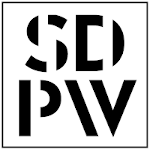Wykaz obszarów badawczych:
| # | Research Area | Dziedzina naukowa |
|---|---|---|
| 1 |
The aim is to develop the principles of shaping the dynamic properties of epoxy-glass and epoxy-carbon composites as well as composites with a mixed structure (e.g. with metal elements). Experimental verification is planned on test stands of elements that have been designed on the basis of the proposed models. On this basis, the following issues can be considered:
- Influence of layer arrangement and degree of resin supersaturation on dynamic properties,
- Influence of elements shape on dynamic properties,
- Analysis of nonlinear phenomena related to vibrations of elements made of epoxy composites,
- Damping of vibrations in elements made of epoxy composites,
- Statistical analysis of the repeatability of the execution of elements, taking into account their dynamic properties.
|
Mechanical Engineering |
| 2 |
The research area covers the diagnosis of the technical condition of mechanical components of drive systems. It is planned to verify the effectiveness of the proposed diagnostic algorithms at test stands or real objects operating in operational conditions. On this basis, the following issues can be considered:
- Study of the evolution of changes in the state of involute meshing in gears,
- Diagnosing the technical condition of toothed gears with various meshing geometries, including multi-stage gears,
- Diagnosing the technical condition of rolling bearings in power transmission system,
- Detection of mechanical damages of internal combustion engine components,
- Analysis of vibroacoustic energy transmission in elements of the drive system.
|
Mechanical Engineering |
| 3 |
The research area concerns the formation of torsional and bending vibrations of the crankshafts resulting from the excitations related to the operation of the internal combustion engine. As part of the work, it is planned to measure the torsional vibrations of the shaft end and transverse vibrations of the engine body, and to develop a dynamic model of the crankshaft. On this basis, the following issues can be considered:
- influence of excitations on vibrations of engine components,
- analysis of the influence of torsional vibration dampers (their structure and mechanical properties) on vibrations of crankshafts,
- analysis of torsional-bending vibrations occurring in crankshafts,
- vibroacoustic diagnostics of elements of crank systems.
|
Mechanical Engineering |
